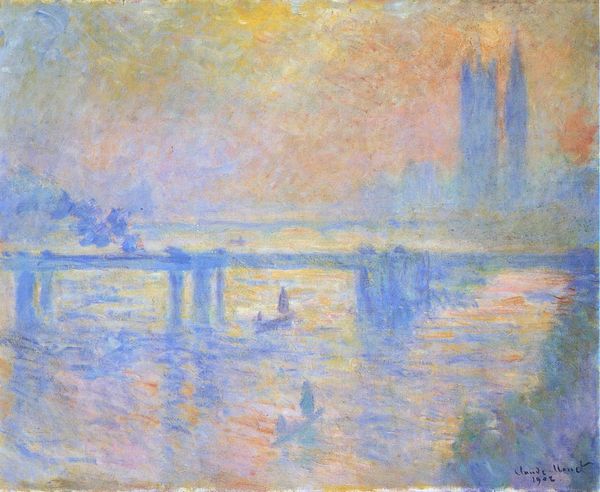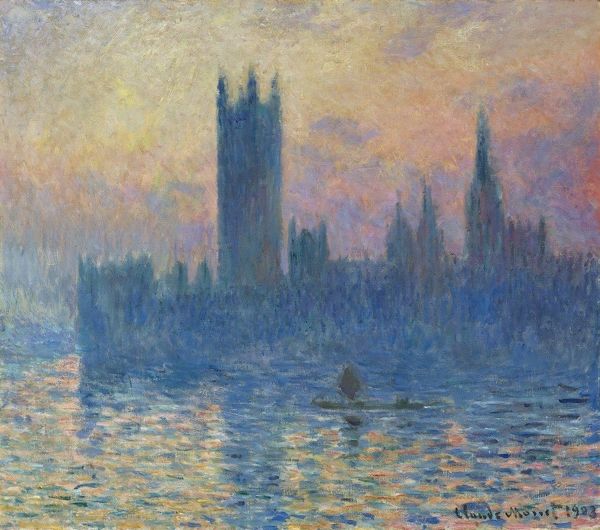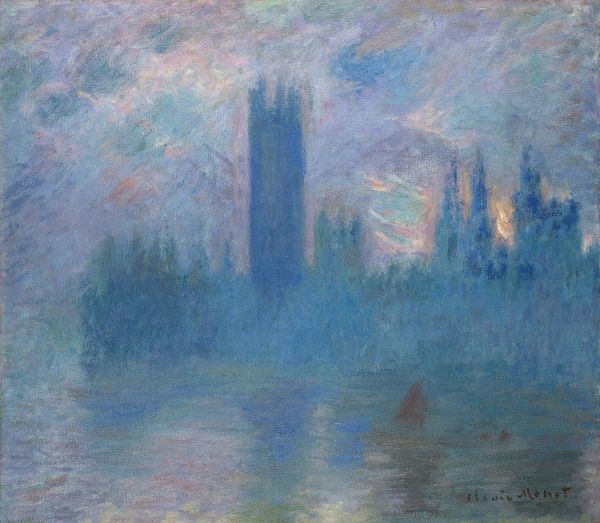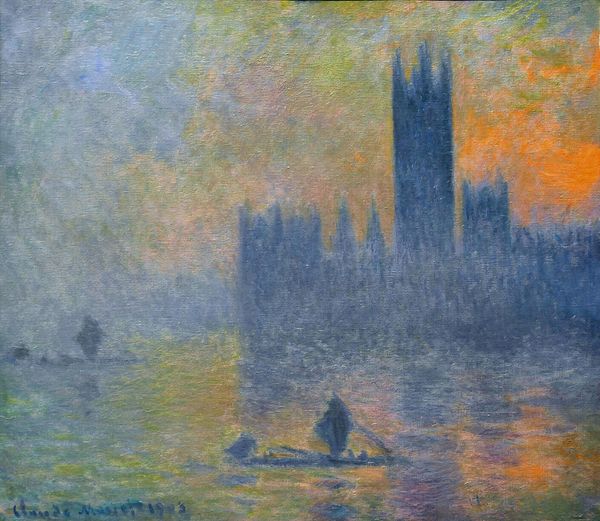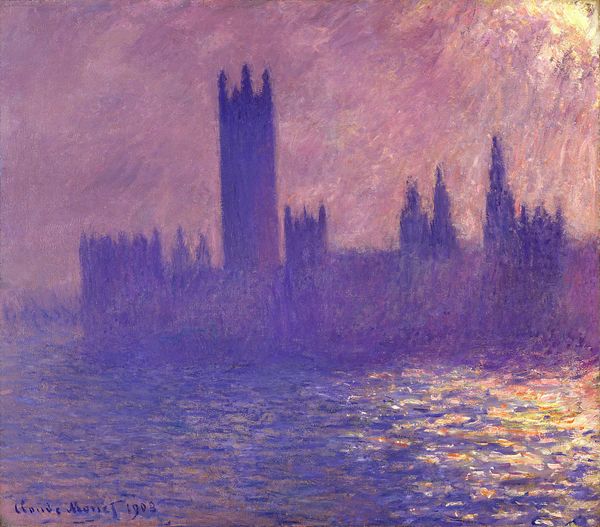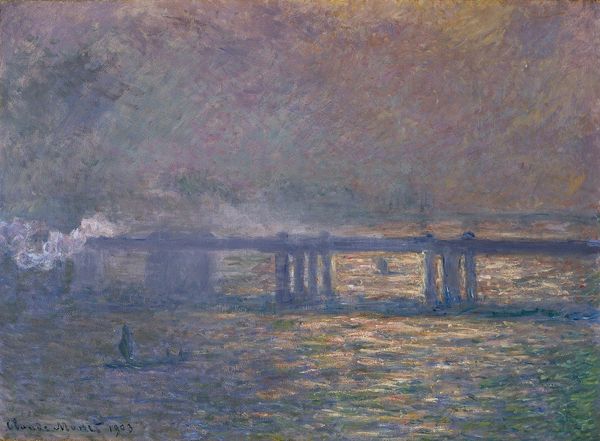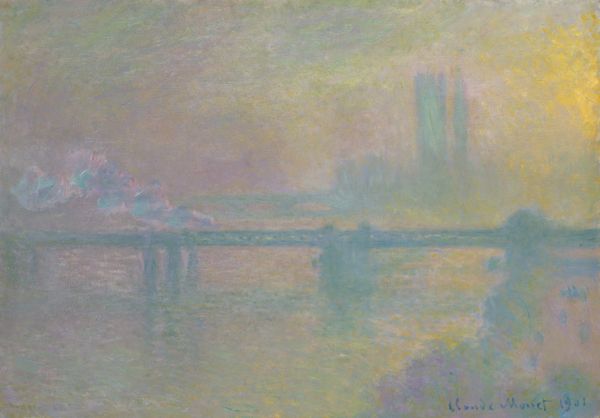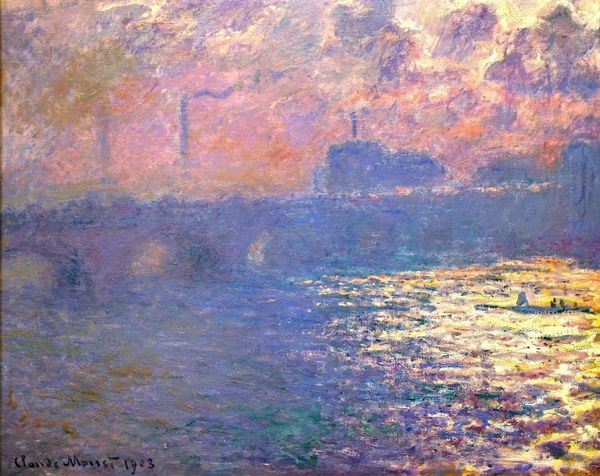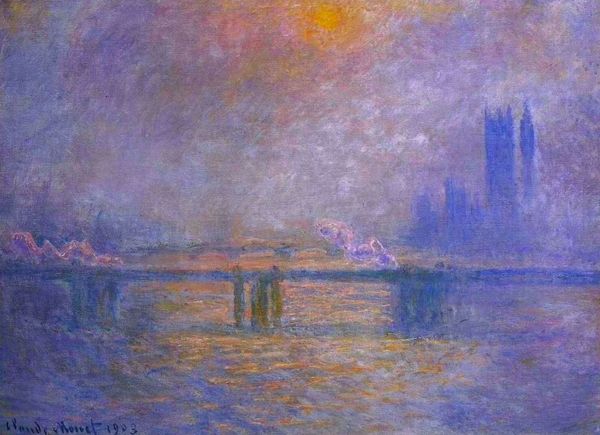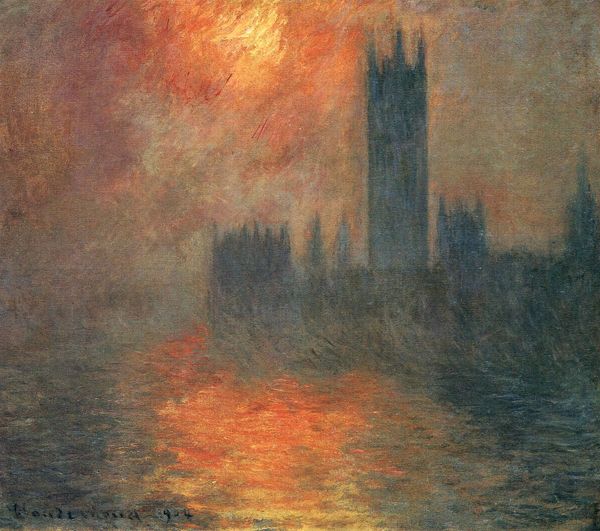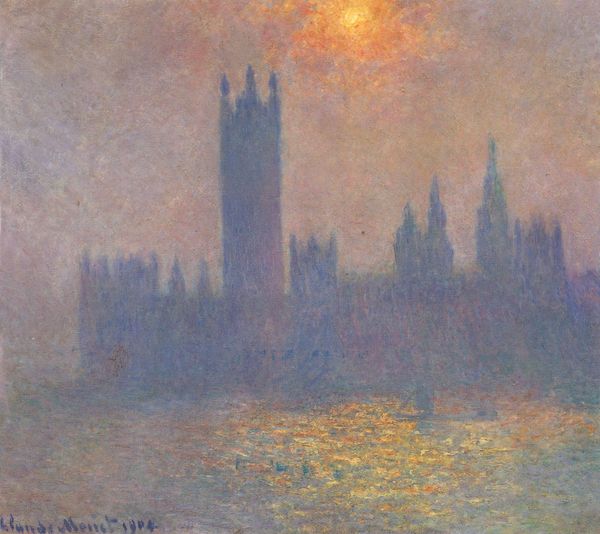
Copyright: Public domain
Claude Monet captured "Charing Cross Bridge" using oil on canvas, a scene dominated by an ethereal atmosphere and a subtle, hazy light. The composition is structured by horizontal bands of water, bridge, and sky, unified by the pervasive blue-grey tonality. Monet’s use of short, broken brushstrokes reflects a profound interest in how light transforms our perception of form. The bridge itself is more suggested than defined, its solidity dissolved into the atmospheric conditions, challenging traditional modes of representation. The indistinct forms invite a reading of the painting not as a depiction of a specific place but as an exploration of visual experience itself. This dissolution of solid forms destabilizes the traditional relationship between observer and observed, suggesting that reality is contingent and unstable. As you consider "Charing Cross Bridge", reflect on how its formal qualities encourage a departure from fixed perspectives. The painting serves as a dynamic interplay between the tangible and the transient.
Comments
No comments
Be the first to comment and join the conversation on the ultimate creative platform.
